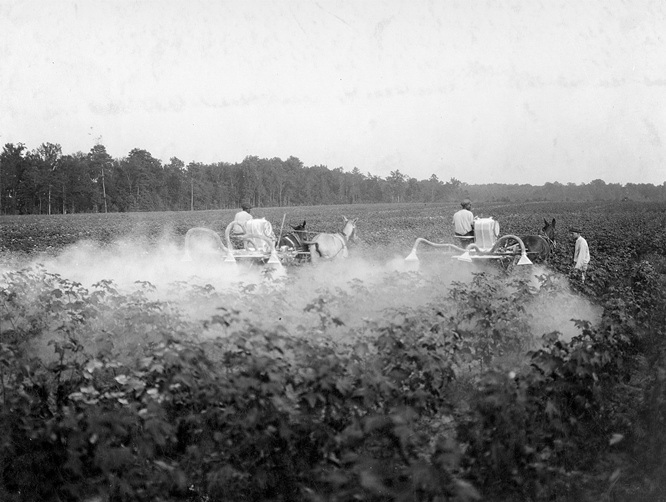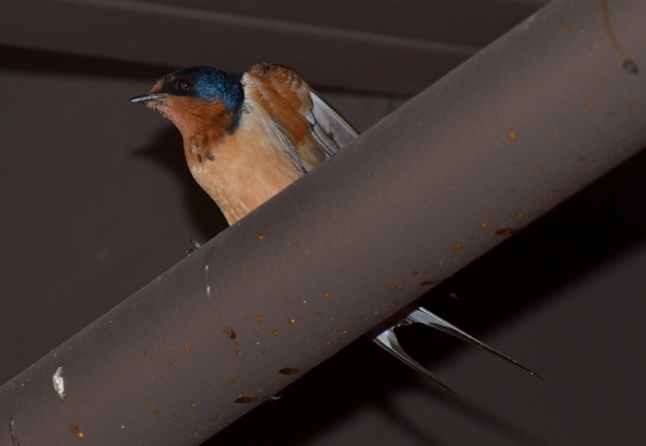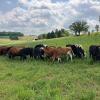Pesticides have been used to control insects for millennia. We know that the ancient Romans burned sulfur to kill insect pests; centuries later, in the 1600s, people were using a mixture of honey and arsenic to control ants. By the end of the 19th century, U.S. farmers were employing a variety of toxic chemicals to control pests, including copper acetoarsenite (known as Paris green), calcium arsenate, and nicotine sulfate.
In the 1950s, arsenic-based pesticides were replaced by DDT, promoted as an improvement because it was not as acutely toxic to humans; no one recognized the extent to which DDT would impact the food chain. Once that was understood, DDT was phased out. By 1975 it had been replaced by organophosphates and carbamates, although it took decades for bald eagles, ospreys, and other birds of prey to recover.

This cycle repeated itself in the 1990s, when yet another class of insecticides were introduced, neonicotinoids, once again touted as an improvement over prior chemicals. Neonicotinoids have two properties that seemed to justify this claim. First, they are less acutely toxic to birds and mammals, including humans, which lessened the health impacts on people. The second potential benefit was that neonicotinoids were “targeted” to kill pests because they are systemic—meaning that once applied they are absorbed by the plant, making the leaves, stems, and roots toxic to pests. It was thought that this would be a way to keep the insecticide from coming into contact with beneficial organisms, but that didn’t turn out to be the case. The problem is that neonicotinoids are taken up into the nectar and pollen, and we now know that pollinators attracted to treated flowers can pick up these insecticides while feeding or gathering supplies for their nest. In some instances this can be directly lethal, while in others it leads problems with flying, navigating, and finding food sources; it also may lead to lower production of young.
To compound this, neonicotinoids are long-lived and mobile in the environment, which is why they are being compared to DDT. Indeed, measurable amounts of residues have been found in woody plants up to six years after a single application. Neonicotinoids can remain in soil for months or even years after use, and plants planted the following year may absorb those chemical residues. Moreover, they easily move from soil to water, where they have been shown to negatively impact aquatic organisms which are the base of the food chain. These insecticides may be leading to declines in everything from aquatic insects to songbirds, and a growing body of evidence suggests neonicotinoids are one factor in declining populations of pollinators.

But the real issue is not the revolving suite of chemicals we use. It is the way we use them. Humans constantly seek the easiest way to control pests and weeds. The complexity of ecosystems, however, means that no single method, whether it is a chemical or not, can solve a problem in its entirety, and each new silver-bullet solution is likely to lead to unforeseen problems.
We need to rethink the ways with which we deal with nature and the ecosystems on which we and all other species depend. Farms, gardens, parks, and other such areas are complex systems, and we need to treat them as such. If we hope to have healthy ecosystems we need a new approach, one that uses their complexity to our advantage. The vast majority of animals in the landscape—including insects—are beneficial, or at least benign. We can use this fact to our advantage by fostering habitats that support the predators and parasites of crop pests. We also need to spend more time understanding actual pests and at what level they will impact yield or kill a plant.
An equally important concern is that many farmers and gardeners use insecticides when they are not needed. Millions of acres a year are treated with neonicotinoids as an “insurance policy,” even though no pest problems are known to be present, and millions of pounds of insecticide are applied in urban and suburban areas in the quest for blemish-free landscapes. Simply moving away from such practices can save money and help pollinators as well as other beneficial insects.
Rather than seeking the next quick fix, we need to look at root causes and address them. By doing so, we can both produce the food we need and protect the environment we love.

This post was originally published in the fall 2015 issue of Wings. Essays on Invertebrate Conservation, the Xerces Society’s membership magazine.



